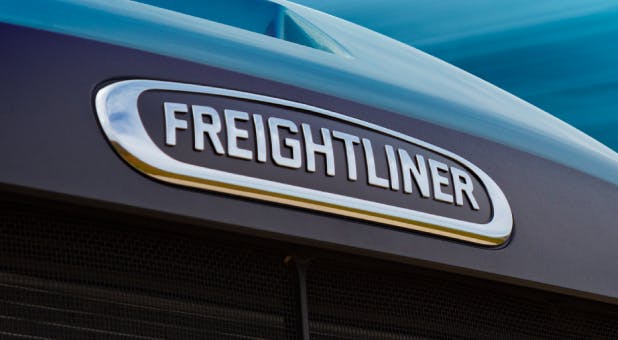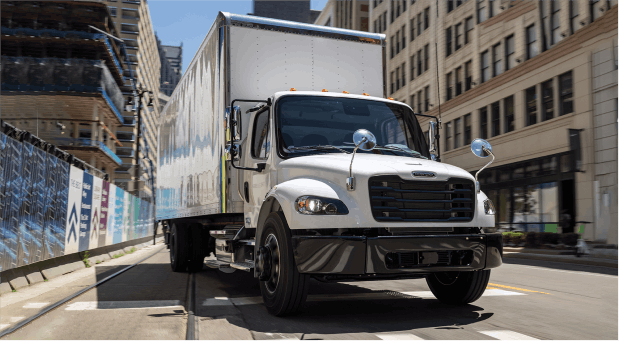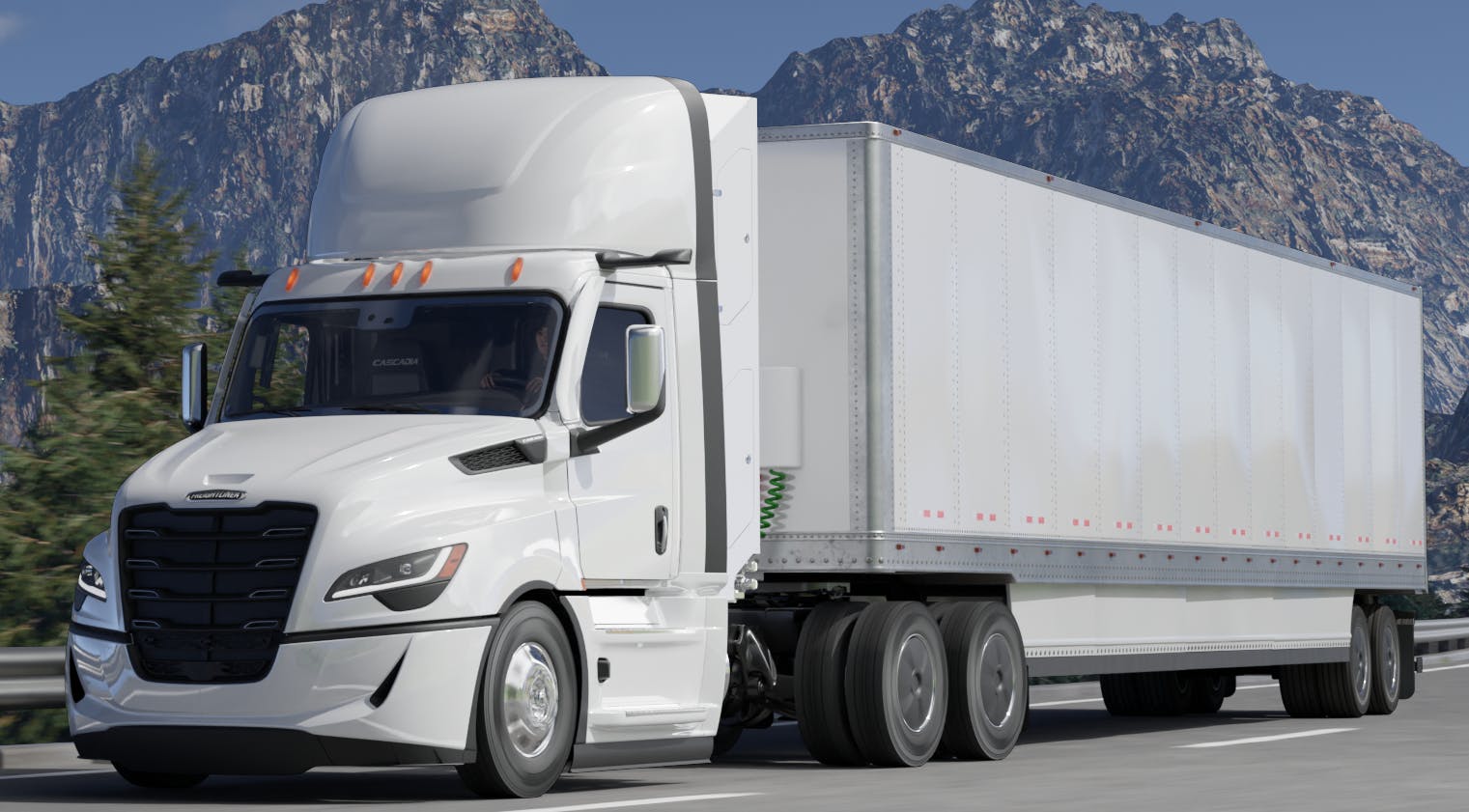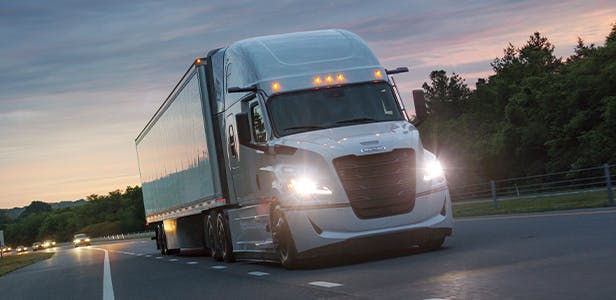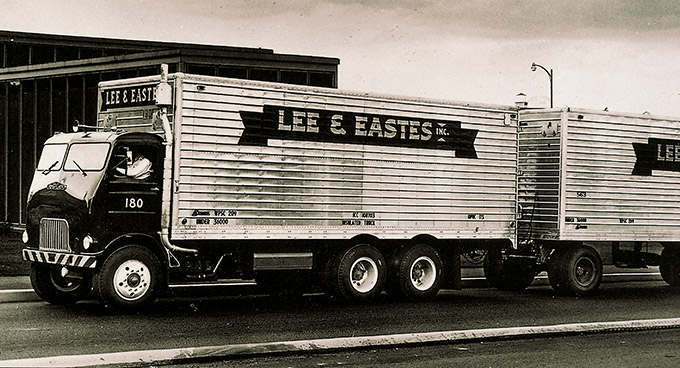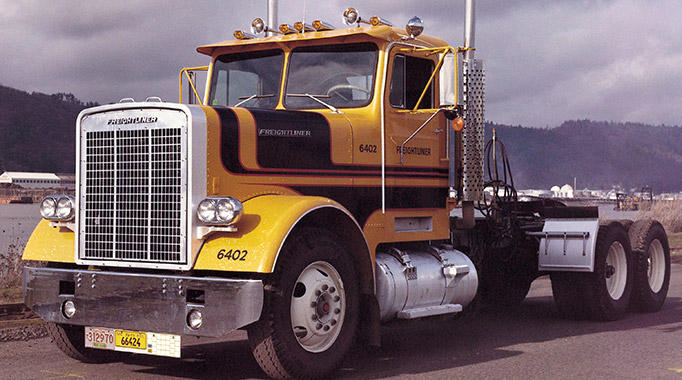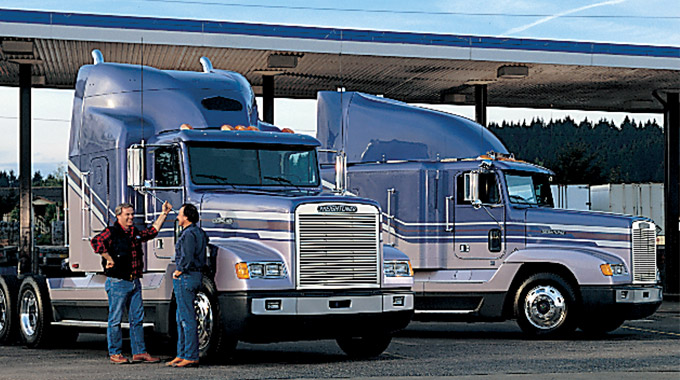Background: A Tradition of Innovation
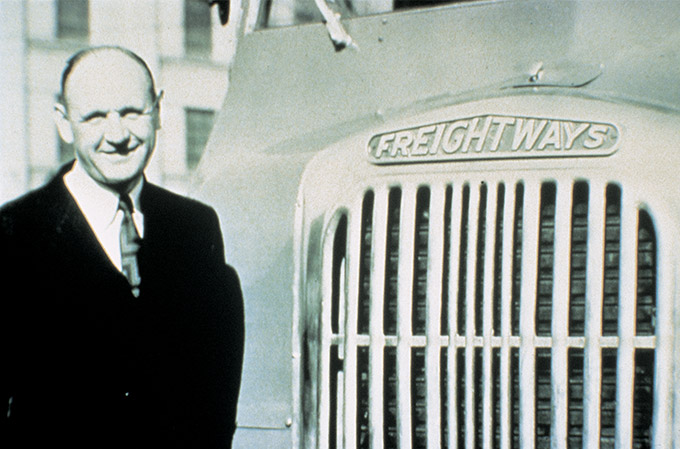
History of Innovation
History of Innovation Timeline
Founded in 1942 on principles of innovation and customer satisfaction, Freightliner Trucks began with Leland James’s idea to build truck components with lightweight aluminum rather than traditional steel. James’s innovative concept was initially met with resistance and skepticism, but he was determined to make his idea a reality. He hired a team of engineers and built the first Freightliner® truck.
More than seven decades following James’s revolutionary idea, Freightliner continues to innovate, developing trucks that build businesses. As a result, business owners, fleet managers and professional drivers rely on our efficient and innovative products to finish the job.
1950
The Eastern Freightliner debuts. The B42 tractor is designed to haul a single semi-trailer. For $15,871, Freightliner sells its first transcontinental cab-over sleeper, capable of hauling a 35-foot trailer.
1953
Freightliner introduces the first overhead sleeper, model WF64, optimized for long-haul applications while meeting restrictive length laws in place at the time. An alternative-fuel truck capable of using gasoline, diesel or liquefied propane, the WF64 is well ahead of its time.
1954
The four-wheel-drive Freightliner® Mountaineer tractor is introduced, offering improved on- and off-highway traction, enabling doubles to operate on snow-covered mountain passes.
1964
Freightliner builds the WFT5366 AWD Cane Hauler for Hawaii, with a GCVW of 76 tons, specifically designed to haul sugar cane.
1965
Powered by a Boeing model 553 gas turbine, the Freightliner® Turboliner weighs 2,400 pounds less than a similar truck with a diesel engine. Offering better visibility in tight spaces, the WFHT6288 half-cab dominates job sites and crowded lots.
1973
Freightliner introduces its flagship Powerliner, a truck with a massive 2,000-square-inch radiator and 600-horsepower engine.
1974
Freightliner builds its 100,000th truck, a 104” Bumper-to-Back-of-Cab (BBC) stretch-cab tractor, and begins shifting towards conventional trucks, offering better ride and handling. The Aluminum Hood WFC kicks things off.
1976
Freightliner expands its product line, introducing the driver-friendly FLL low-cab-forward truck.
1987
Freightliner’s first aerodynamic, conventional tractor, the FLD, is introduced in 112” and 120” BBCs. It becomes North America’s best-selling class-8 truck.
1989
Freightliner’s proprietary AirLiner suspension gives drivers a new level of comfort, cushioning the cab with airbags built into the suspension. It becomes the best-selling air suspension of all time.
1990
The Freightliner® FLD Classic is introduced to market for the owner-operator desiring a traditional-appearing truck.
1991
Manufactured for the medium-duty market, the FLN Business Class truck offers improvements in visibility and maneuverability for the vocational truck buyer.
1992
The Freightliner® FLD 70” Raised Roof Sleeper is introduced and rapidly exceeds sales expectations.
1993
The Freightliner® FLD Classic XL provides a 132”-long, BBC traditional-styled truck.
1995
The Freightliner Century Class® offers technological breakthroughs that improve fuel economy, increase payload, enhance driver safety and increase productivity.
1998
Combining the spaciousness of a conventional cab and the maneuverability and visibility of a cab-over-engine (COE), the Argosy incorporates the first flat-floor design in a COE. It also offers the industry’s first electronically assisted articulating steps, making it easier to get in and out.
1999
Freightliner Trucks introduces the Century Class S/T (Safety/Technology) vehicle, a major product upgrade, adding numerous standard safety and technology features.
2001
Freightliner introduces the Business Class M2, offering the strength of steel with the lightweight corrosion resistance of aluminum.
2004
Freightliner builds the first—and still the only—full-scale wind tunnel owned and operated by a North American truck manufacturer.
2007
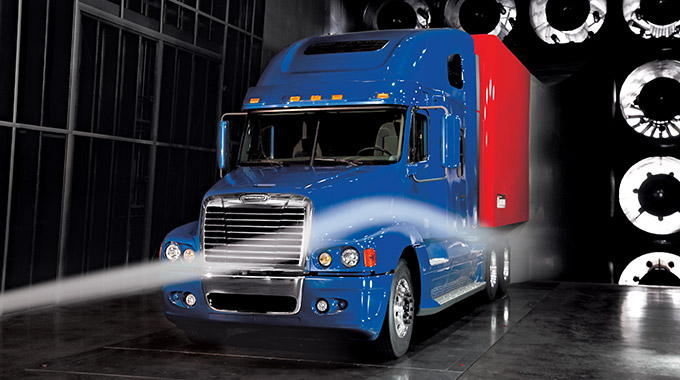 The original Freightliner Cascadia® truck debuts, incorporating a range of new aerodynamic, lightweight and maintenance-reducing features. The Detroit® DD15® engine, a lighter-weight engine that reduces parasitic loss to boost fuel efficiency, is introduced. With a proprietary asymmetric turbocharger, optimized piston design and variable-speed water pump, the DD15 delivers up to 505 horsepower.
The original Freightliner Cascadia® truck debuts, incorporating a range of new aerodynamic, lightweight and maintenance-reducing features. The Detroit® DD15® engine, a lighter-weight engine that reduces parasitic loss to boost fuel efficiency, is introduced. With a proprietary asymmetric turbocharger, optimized piston design and variable-speed water pump, the DD15 delivers up to 505 horsepower.
2009
Developed to highlight not only existing technologies, but also to preview what customers could expect in the near future, the Freightliner Cascadia Innovation Truck is revealed at the Mid-America Trucking Show.
2011
Freightliner’s 1,000th natural gas-powered truck rolls off the line, cementing North America’s strongest alternative power lineup. The SD line debuts, rounding out Freightliner’s vocational offering to cover a wide range of severe-duty applications, such as construction, mining and municipal segments.
2012
The Freightliner Revolution Innovation Truck concept vehicle appears at the Mid-America Trucking Show, featuring a revolutionary crossover cab with cutting-edge ergonomics and a driver’s jump seat that transforms into a sleep space in seconds. The Freightliner Cascadia Evolution is introduced, setting a new standard for reducing RCO.
2015
The Freightliner SuperTruck is unveiled at the Mid-America Trucking Show, smashing a goal set by the Department of Energy by increasing freight hauling efficiency by 115 percent. The Freightliner Inspiration Truck becomes the first licensed commercial truck to operate in autonomous vehicle mode on open public highways in the United States.
2017
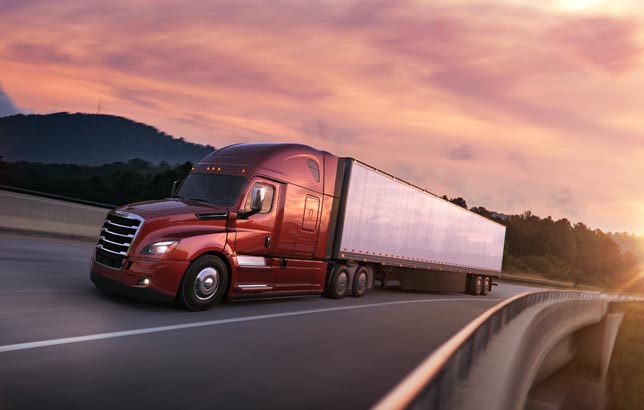 Elevating the class-8 driving experience for increased comfort and driver retention, the Cascadia is released to the general public, ushering in a new era of on-highway trucking efficiency and uptime—driven by inspired science and the integrated Detroit powertrain.
Elevating the class-8 driving experience for increased comfort and driver retention, the Cascadia is released to the general public, ushering in a new era of on-highway trucking efficiency and uptime—driven by inspired science and the integrated Detroit powertrain.
Lowering every customer’s Real Cost of Ownership by focusing on superior quality, fuel efficiency, uptime, safety, connectivity and driver experience, the Cascadia is poised to take an industry by storm.
Enhancing the best elements of the successful Cascadia line to create the definitive Cascadia experience, Freightliner increases fuel efficiency by eight percent over the previous model.

